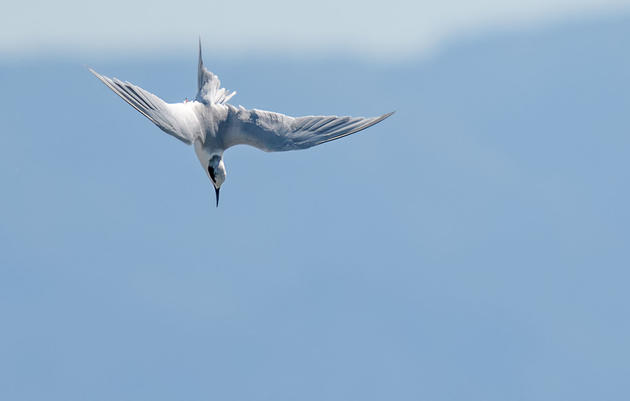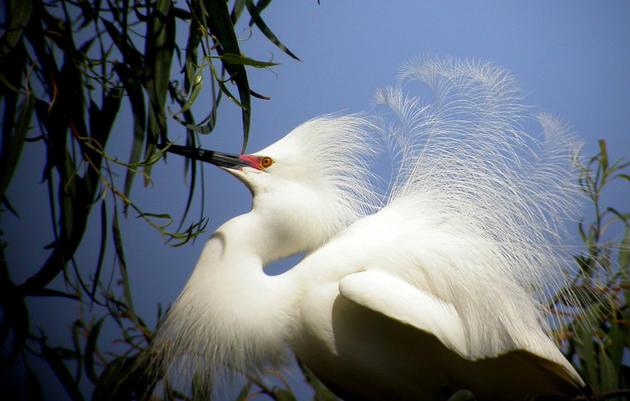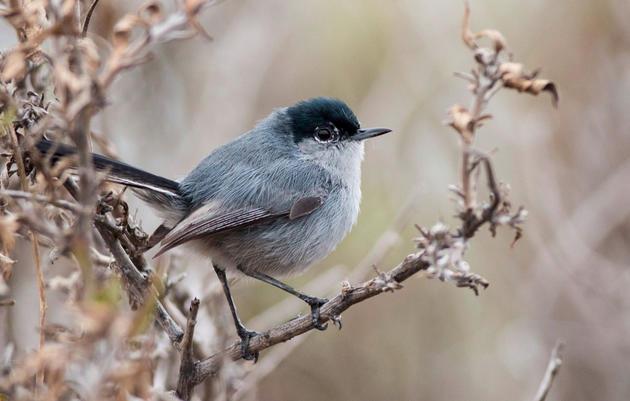
For the last several months, we at Audubon have been expecting an attack on the Migratory Brid Treaty Act, one of the country’s bedrock environmental protection laws. And that attack came earlier this month, when Rep. Liz Cheney (R-WY) introduced what we’re calling the “bird-killer amendment” to a bill already seeking to weaken restrictions on oil and gas drilling. Audubon immediately announced that it would fight any effort to weaken the Act.
From his position as renewable energy director, Audubon California’s Garry George works to reduce impacts on birds from energy projects – both renewable and otherwise – and the Migratory Bird Treaty Act is one of the best tools in his toolbox for protecting birds. We chatted with him about this latest development.
Garrison Frost: Can you briefly explain why the Migratory Bird Treaty Act is so important to Audubon?
Garry George: The Migratory Bird Treaty Act was one of Audubon’s earliest victories. Congress passed the MBTA in 1918 in response to public outcry over the mass slaughter of birds, which threatened egrets and other species with extirpation. The people who fought hardest for this law were the same people who had founded Audubon just a few years earlier. The law protects more than 1,000 bird species in part because industries implement commonsense best management practices like covering tar pits and marking transmission lines.
Why are we seeing these latest attacks on the law?
MBTA has been used for prosecution of egregious acts of companies that kill large numbers of birds if it could have been prevented, although prosecutions under the law been few. Examples are the BP oil spill, two wind projects in Wyoming that were killing Golden Eagles, and oil companies with open waste pits that birds mistake for ponds. Energy companies don’t want the liability of prosecution under this law.
Why is this law so important for California birds?
There was a big Santa Barbara Oil Spill in 1969 that oiled a lot of birds, so if another big spill happens, the oil company would be liable for prosecution and funding the rehabilitation and increasing the reproduction of the birds that were harmed. In fact, moneys from an oil spill in San Francisco Bay has paid for the work our chapters have done on Western and Clark’s grebes on their breeding lakes in Northern California to protect them and their nests.
Even though there haven't been very many prosecutions for violations of the MBTA, does it still put pressure on these industries?
Yes, but many industries have voluntarily complied to reduce their liability. For instance, Audubon, U.S. Fish & Wildlife Service and the utility industry joined together to form Avian Power Line Interaction Committee or APLIC. Through regular meetings and working together APLIC has developed a thick book of voluntary measures that will minimize the impacts of electrocution and collision on birds, especially raptors. Wind energy developers, U.S. Fish & Wildlife Service, and conservation organizations developed the Land-based Wind Turbine Guidelines that includes best management practices and a tiered process for siting wind projects to minimize the impacts on birds. Many corporations have Avian Protection Plans that guide them in simple measures that they can take that are not costly but that minimize bird mortality.
Is this really just about energy development, or does the MBTA impact other industries?
The National Association of Manufacturers is lobbying Congress to weaken the MBTA, so some of the manufacturing plants they represent must be having impacts on birds as well. But any industry might have liability for unnecessarily killing birds falls under MBTA, especially when those deaths could have been prevented. Those industries include sports stadiums with reflective glass (like the recent one in Minneapolis that Audubon protested), communications towers, or manufacturing industries.
Sounds like Audubon is ready to fight hard to save the MBTA. What kinds of things are we doing?
This is a very high priority for us. Audubon is already in action in meetings with House and Senate representatives to educate them on the Act and its importance, mobilizing our members and supporters to take action with their representatives, holding briefings with the media, asking the state wildlife agencies to weigh in on the importance of the MBTA to their state, and meeting with renewable industries to find an acceptable path forward to resolving their conflicts with MBTA liability through best management practices approved by the U.S. Fish & Wildlife Service.
By Garrison Frost
Monthly Giving
Our monthly giving program offers the peace of mind that you’re doing your part every day.







